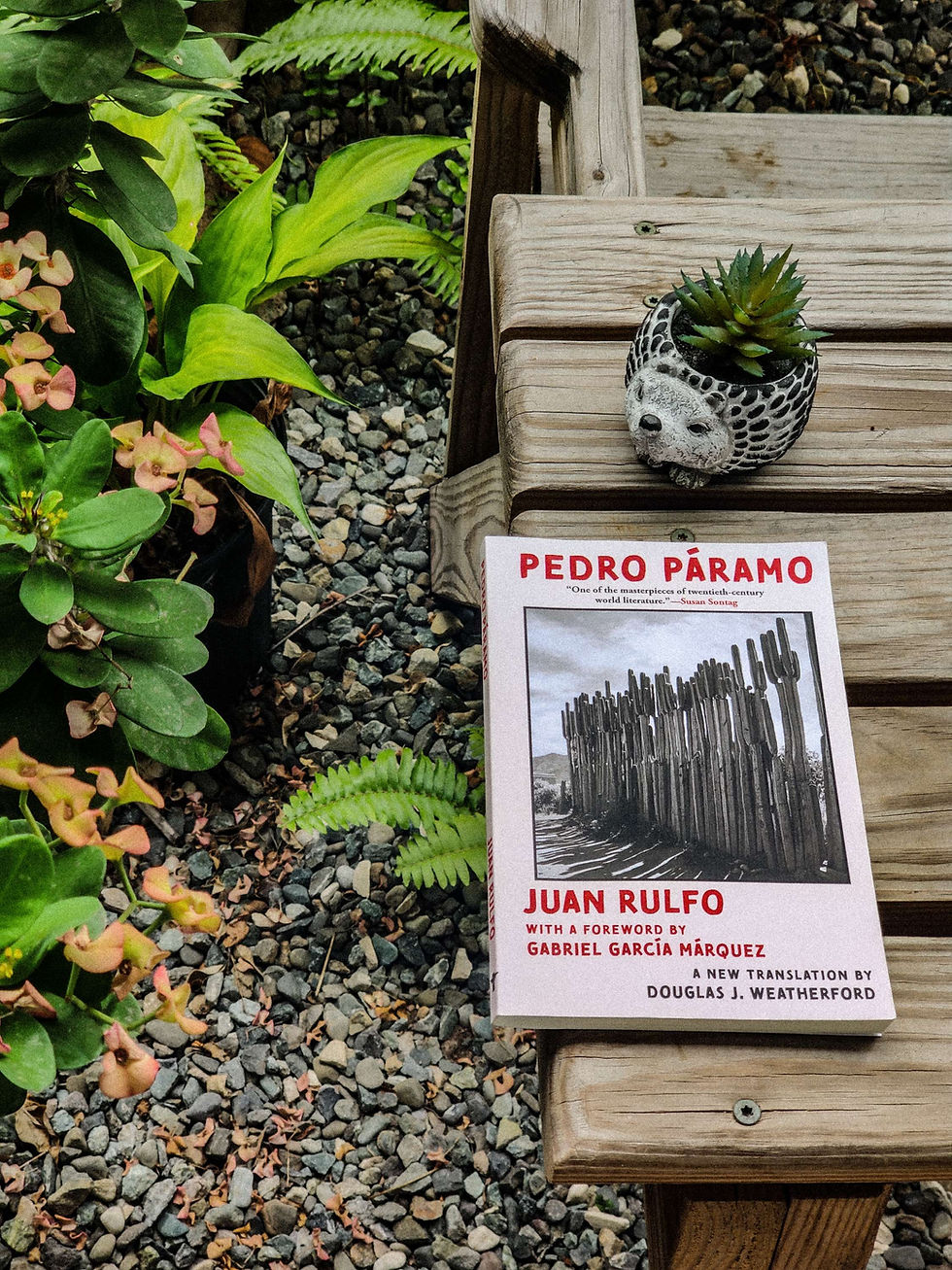
“This town is filled with echoes. It's like they were trapped behind the walls, or beneath the cobblestones. When you walk you feel like someone's behind you, stepping in your footsteps.”
Pedro Páramo begins with Juan Preciado's journey to Comala, a desolate Mexican town, fulfilling a promise to his dying mother to find his father, Pedro Páramo. Upon arrival, Juan encounters spectral inhabitants who unravel the grim history of Comala and Páramo's oppressive rule.
This novel is deeply atmospheric, beautifully written, and rich with symbolism. While the book grabbed me from the start with its intriguing premise, I found myself confused as the story progressed, especially around the halfway mark. The magical realism genre has never been my favorite, with only a few exceptions, so perhaps I'm not the ideal reader for this book. While a second reading might bring more clarity, I'm not sure I'm compelled enough to revisit it. The narrative blurs the line between the living and the dead, creating a limbo-like state that reminded me of Lincoln in the Bardo by George Saunders—a book I also have mixed feelings about.
Despite my struggles with the genre, I must commend Rulfo's exquisite prose. His lyrical and poetic writing creates an eerie atmosphere that transports you to Comala. However, the complexity of the narrative sometimes overshadowed the character development. Yet, I recognize the depth of symbolism, particularly in the name "Pedro Páramo." "Pedro" signifies stone, and "Páramo" denotes desert, reflecting the essence of the story's setting.
Death permeates the narrative as Juan arrives in Comala to fulfill a promise to his deceased mother and finds a town filled with the spirits of the dead. The afterlife and present blur together, mingling past and present, life and death. The fragmented memories of the characters reflect the fragmented history of Mexico itself. Memories are distorted and unreliable, highlighting the subjective nature of history and the difficulty of reconciling past traumas.
Pedro Páramo represents the oppressive power structures in Mexican society, particularly in rural areas. His tyrannical rule over Comala symbolizes the exploitation and abuse of power prevalent throughout Mexican history, echoing the turmoil of the Mexican Revolution. The revolution sought to overthrow such oppressive regimes, and Rulfo's portrayal of Páramo's reign offers a stark reminder of the struggles and injustices that fueled the revolution.
While I may not have fully grasped the narrative's nuances on my initial read, I appreciate the layers of symbolism and various themes in this book. I think I would recognize its potential value even more if I read it in an academic context, where a more attentive read could unlock its rich complexities.
Pedro Páramo has inspired many writers, including Gabriel Garcia Marquez, Mario Vargas Llosa, and Jorge Luis Borges. If you're a fan of any of these authors, this book may be a worthwhile read for you.
Comments